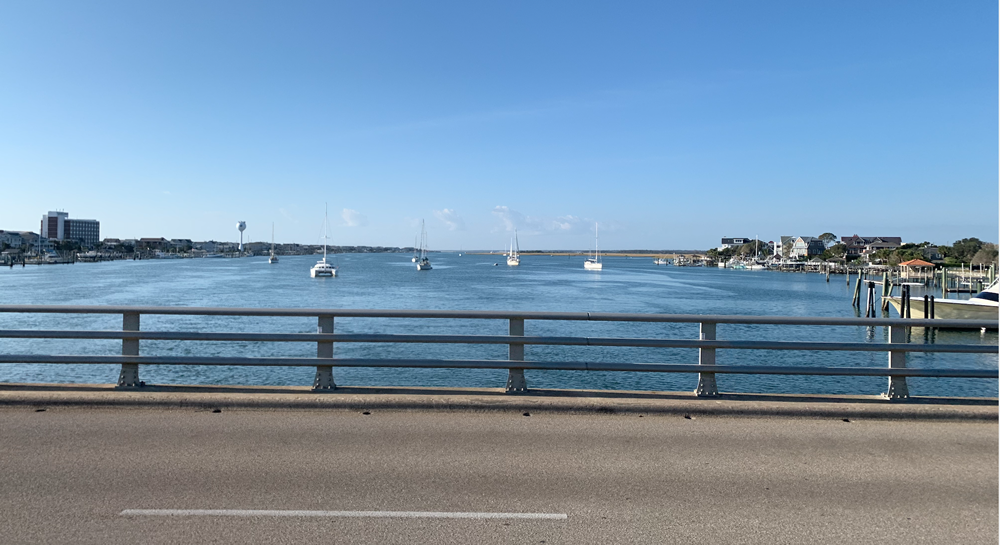Coastal NC Homeowners Insurance Rates Increasing in July 2020

If you are lucky enough to own a house on the coast in North Carolina, but don’t live in it full time, there is a very good chance that you will be paying more for wind insurance starting July 1st.
The N.C. Rate Bureau, an industry group that represents insurance companies writing policies in North Carolina have recently reached an agreement with the N.C. Department of Insurance that will result in a 5.3 percent increase in wind coverage premiums for non-owner-occupied homes. This is significantly less than the rate increase of 24.3 percent that the N.C. Rate Bureau had requested. The Rate Bureau had also requested a 4.6 percent increase in fire coverage premiums but settled for no increase in fire premiums.
The N.C. Department of Insurance stressed in a recent press release that the latest settlement does not impact homeowner policies where the homeowner lives in their home full time. “Dwelling policies are offered to non-owner-occupied residences of no more than four units, including rental properties, investment properties and other properties that are not occupied full time by the property owner,” the N.C Department said in the press release.
The Department of Insurance came to an agreement back in September regarding homeowner policies for full time residents in their homes. While the Rate Bureau requested a 17.4 percent statewide increase, they settled for an average 4 percent increase. Coastal dwellers experienced a much larger increase.
Is the System Fair?
It should come as no surprise that coastal homeowners often feel the system is a bit unfair and they pay more than their share of insurance increases.
“What’s frustrating about the rate making process is that it is largely unfixable, even though our legislative delegation continues to try,” said Tyler Newman, President and CEO of Business Alliance for a Sound Economy in a recent Star News article. “Until we have statewide equity in the process, we are going to get this slow drip of incremental rate increases on the coast, when our rates are already three times higher than the inland parts of the state,” he continued.
According to Newman the recent hurricanes cannot explain the significant premium increases that coastal counties have seen. “A significant portion of those losses were flood-related, and the rest of the state was impacted as well,” he said in the Star News article.
Here is a breakdown of recent dwelling (non-owner-occupied residences) rate insurance changes by country:
- Beach: 10.3% / 9.4%
- Eastern: 11% / 8.5%
- Western (28401, 28402): No increase
- Beach: 10.3% / 9.4%
- Eastern: 11% / 8.5%
- Western: No increase
- Beach: 10.3% / 9.4%
- Eastern: 11% / 8.5%
- Western: No increase
How the State is Divided
When it comes to insurance rates, North Carolina is often divided into three territories. Inland counties only have one territory but, on the coast, there are typically more than one territory. As an example, New Hanover has three territories, as do Brunswick and Pender.
Let’s have a look at Brunswick, Pender and New Hanover as examples. In these three counties, wind-coverage premiums on non-owner-occupied dwellings south and east of the Intracoastal Waterway are set to increase 10.3%. The remaining section of each county is separated into east and west regions. Homes that fall into the eastern section are looking at an 11 percent increase while homeowners in western Brunswick, New Hanover and Pender, there will be no increase at all.
Insurance in North Carolina has become increasing complicated over the years, especially for people on the coast. This is especially true for wind and hail coverage. As the number of storms hitting the coast has increased and the amount of damaged from each storm grows, insurers have stopped writing wind and hail policies in certain coastal counties.
The Beach Plan which was created in 1969 as the insurer of last resort in high risk coastal areas has had to fill the void as more and more homeowners found it difficult or impossible to find affordable coverage. While the Department of Insurance cannot directly set rates for the Beach Plan, it does have some influence. Under state law, the rates offered by the Beach Plan “shall be the Rate Bureau rates plus a surcharge of 5% for wind/hail coverages or 15% for a full-up homeowners policy including wind/hail.”
Despite the cap on rate increases, homeowners on the coast have seen significant increases in the last year and it affects home affordability in these areas. Brunswick, New Hanover and Pender Counties saw increases of 9.8% in beach areas and 3.5 percent increases in the western section.
“We have ongoing discussions in our community about housing affordability and traffic and apartments, but people need to realize that these incremental annual insurance increases passed down from the state are also significant drivers on the cost of housing and where people are able to live in our community,” said Newman in the Star News article”
